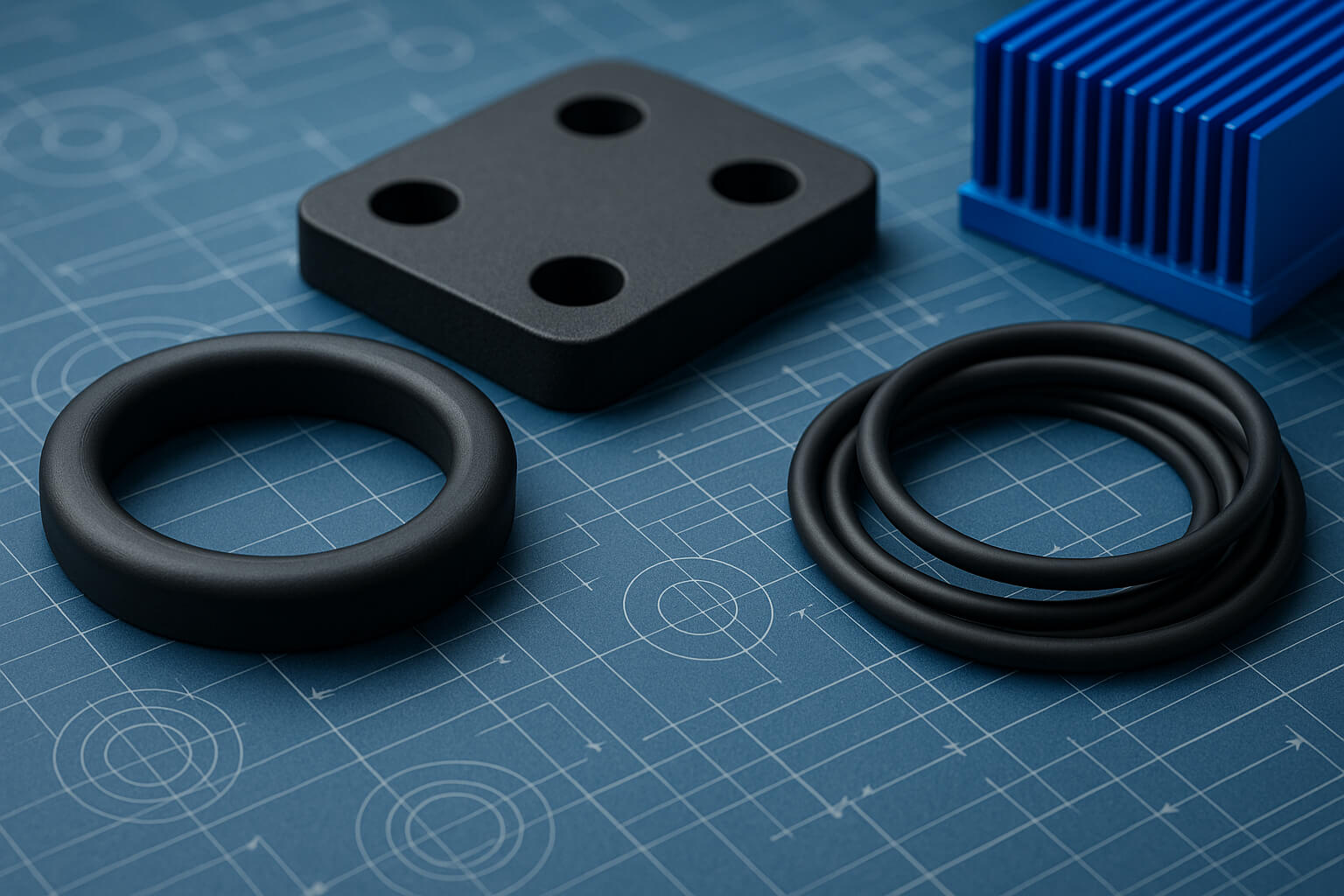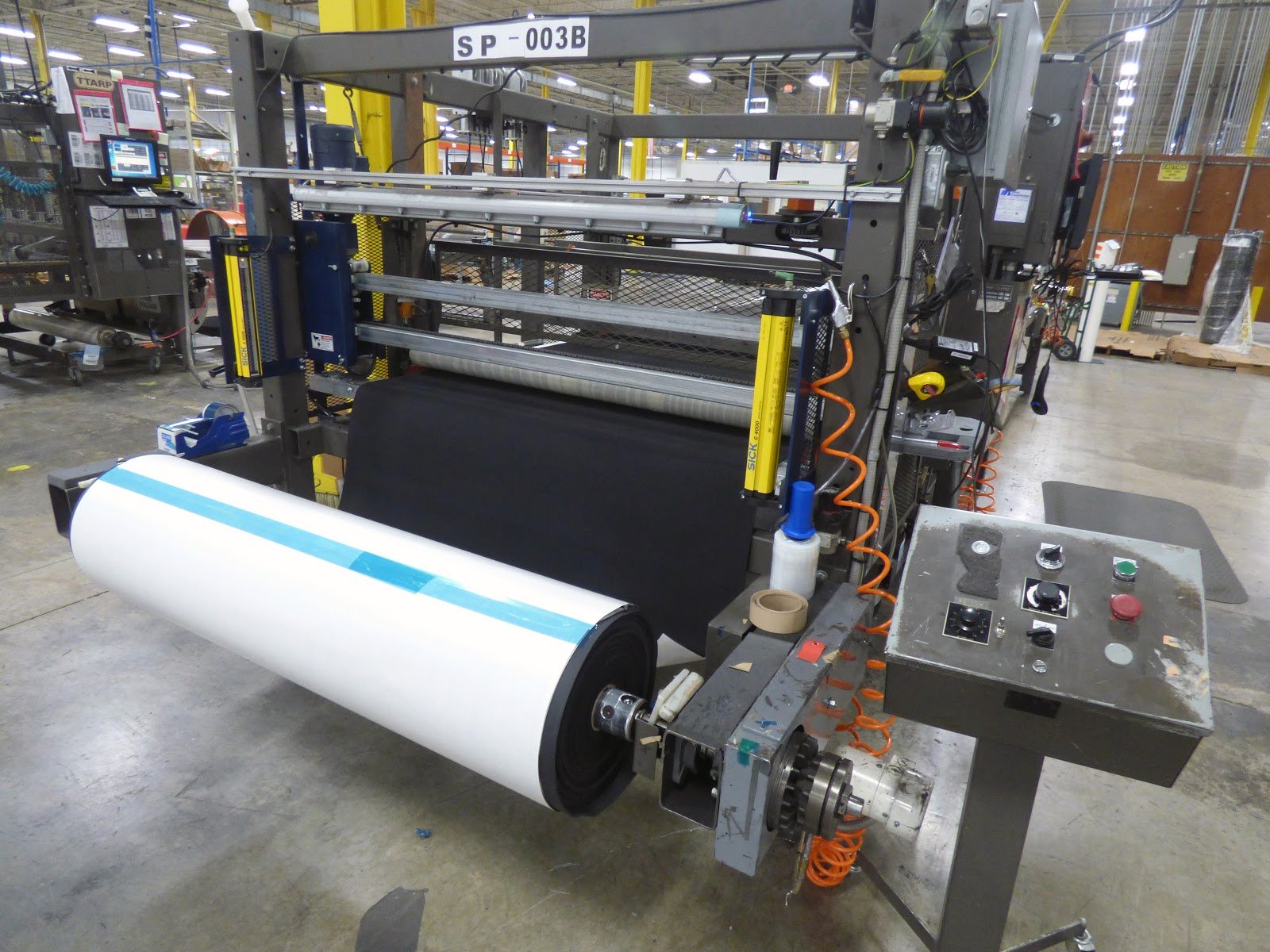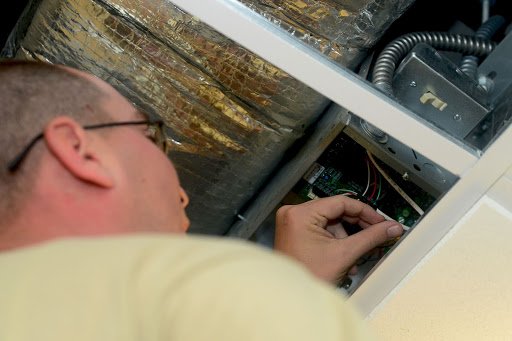
Silicone elastomers are essential materials in modern engineering, providing flexibility, durability and high-performance capabilities across various industries. Their compressibility, combined...

In an established market like HVAC, it’s hard to find new ways to save money, since you’re likely familiar with many of the materials used in the industry.
However, there are ways to reduce costs for your thermal, acoustic, sealing, and gasketing materials that you might not have considered. In this guide, the HVAC experts at Sur-Seal will break down the best low-cost materials for those applications, as well as some additional tips for lowering costs.
Thermal, acoustic, sealing, and gasketing applications each have their own low-cost material(s):
Let’s take a closer look at each of these materials to see their function before looking at how to decrease the cost of using them.

Fiberglass is an inexpensive and versatile material staple in the HVAC industry for its insulating properties.
Fiberglass is often used in HVAC applications with a facing (usually made of foil). These facings contain loose fibers and prevent them from getting into airflows, while also enhancing their insulating properties. Facings also give fiberglass the flammability characteristics required for many in-home applications, since the foil is not flammable and keeps smoke levels lower in case of a fire.
Fiberglass with a foil facing can also provide acoustical enhancements, as the facing suppresses noise. Micro-perforating the facing will further enhance its acoustic capabilities.
Foil facing does come at a premium cost, but there are other ways to reduce the cost of fiberglass. For instance, you might be overspending on a thick piece of fiberglass due to its increased temperature and noise resistance, which are both factors that raise the price. You can cut this cost by making sure you’re using fiberglass that is an appropriate thickness for your application. Assess your application and determine the thickness you need to ensure you aren’t over-paying.
Blended PVC-NBR sponge is oftentimes used as a gap-filler for air handlers. This material is referred to as “stripping.”
PVC-NBR sponge is regularly used with an adhesive, where it’s attached to an air handler panel and used to block against air, debris, and other environmental factors (such as heat).
This material can come in roll form, where it can be cut to specifications and used as needed. It can also be die-cut and shipped pre-shaped, though this option is more expensive in the long run. Having the material arrive in roll form saves on both labor from the converter and material expense. One advantage in getting the parts precut is the savings you, the end user, will achieve in not having to use your labor to cut them.
Silicone and poron are gasketing materials that are used in high-temperature environments.
Poron is used in moderate temperature environments, while silicone is specified for very high-temperature applications. As such, it’s important to know the temperature environment of your application when making a material decision. Just like fiberglass thickness, you want to avoid using a higher-level material than you need to keep costs low.
Pay special attention to a material’s R-value, which is its resistance to temperature change and heat flow. This number can guide your decision and ensure you’re using the material that is suited for your application.

Another commonly used material across multiple applications is PVC foam, a highly specified product that can serve several different industries.
This foam can be utilized for sealing, gasketing, or insulating applications. It cushions against shock and vibration, can seal out environmental factors like moisture and dust, service a wide range of temperatures, and much more.
However, since this material is so versatile, selecting the right type of PVC foam can be challenging. Let’s examine a few ways to ensure you choose the right foam type.
As stated earlier, PVC foam is a very versatile material that can be specified to suit almost any need. However, there are six common applications for this type of foam that can guide your selection process: appliances, automotive, topper seal, gasketing, HVAC, and weather stripping.
There are five foam types that can be used to solve for the applications discussed above. The five foam types are:
Each of these foams have specific qualities that make them best-suited for certain applications, so knowing the difference between them can make your decision much easier.
Choosing the right type of PVC foam starts with understanding its different applications and foam types before focusing on your application and choosing the best material type to meet its needs.

HVAC material options are somewhat fixed, but there are still cost-reduction opportunities. Let’s look at some other ways you can reduce your material cost without sacrificing quality.
Many materials and parts require adhesives to be applied to products. If you’ve been using the same adhesive type for years, you might be missing out on new styles or suppliers with similar performance and lower costs associated with them.
Speaking of suppliers, you can utilize a converter’s buying power to reduce costs. Converters have the ability to get the same materials you use from other suppliers at a lower cost.
One other strategy is to increase your order quantity, which can dilute setup time costs and reduce the per-piece price. This can also decrease your order frequency, which can be economical if it’s a product you manufacture frequently.

Though there are only a handful of commonly used HVAC materials, focusing on the ones with the most “bang for your buck” is important.
By identifying the material that’s best suited for your application, and then assessing your current material specifications and supply chain, you can ensure that you’re getting the best cost possible.
When determining the best materials, it’s important to remember that while there are gaps between the highest- and lowest-performing materials, there are also gaps between the applications they’re used in. Use this guide to make sure you’re using the right material for the job, and you can reduce costs, improve efficiency, and create great products for your customers.